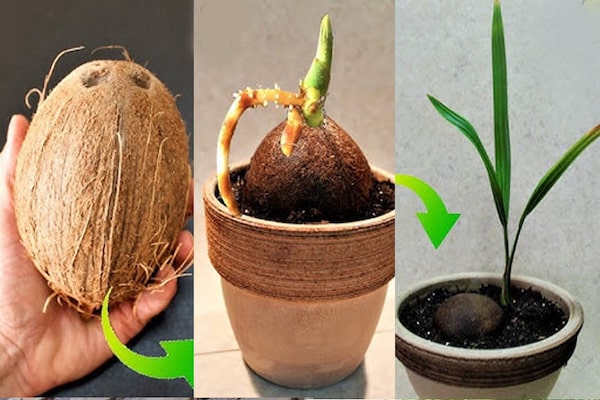How to Grow and Plant a Coconut Tree at Home
The coconut tree, a symbol of tropical vacations, evokes images of white sandy beaches and majestic palm trees gently swaying in the wind. If you dream of recreating that tropical ambiance at home, you can consider growing and planting a coconut tree at home. Although the coconut palm is native to tropical regions, it can be grown successfully indoors or in areas with a suitable climate. In this article we will tell you how to grow a coconut tree at home. 1. Choose the Right Type of Coconut Not all coconuts are suitable for growing indoors. For success, choose dwarf coconuts, also called Malaysian coconuts or Pacific dwarf coconuts. These varieties are better suited to growing in pots and have a more manageable size. 2. Prepare the coconut To begin, purchase a dwarf coconut that has already sprouted. Make sure the germination is about 3-4 cm. You can find these coconuts in specialty nurseries. You may need to remove part of the outer shell to access the sprouted coconut. 3. Choose a suitable pot Select a pot large enough for the plant to grow comfortably. Make sure the pot has drainage holes to prevent root rot. Coconut trees prefer deep rather than wide pots. 4. Prepare the substrate Use a mixture of well-aerated potting soil, sand and garden soil to create a suitable substrate. Make sure the mixture drains well. 5. Plant the coconut Plant the sprouted coconut in the pot so that half of the coconut is buried in the substrate. Make sure the sprouted tip is facing up. 6. Provide the right growing conditions The coconut tree needs specific conditions to thrive. Here are some things to consider: Light: Coconut trees like bright, even direct light. Place your plant near a sunny window. Temperature: Coconut trees prefer warm temperatures and do not tolerate temperatures below 18°C. Avoid cold drafts. Humidity: Maintain high relative humidity around the plant. You can mist the leaves regularly or use a humidifier. 7. Water correctly Water the coconut tree so as to keep the substrate slightly moist but not soggy. Let the top layer of the substrate dry slightly between two waterings. Remember to drain excess water that may accumulate in the saucer under the pot. 8. Fertilize regularly Coconut trees need nutrients to grow well. Use a balanced houseplant fertilizer and follow the manufacturer’s recommendations. Generally, a diluted liquid fertilizer every 4 to 6 weeks during the growing season is sufficient. 9. Be patient The growth of a coconut tree is slow, and it may take several years before the plant begins to produce coconuts. Be patient and continue to provide appropriate care. In conclusion, growing and planting a coconut tree at home is an exciting project for those who dream of bringing a tropical touch to their environment. By following these simple steps and providing the proper growing conditions, you can grow a coconut tree indoors and enjoy its exotic charm for many years. Remember to take care of your coconut tree and admire it as it grows and thrives.
